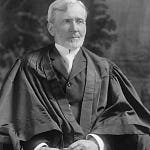This Day in Legal History: Same-Sex Marriage Legalized in Ireland
On May 23, 2015, Ireland became the first country in the world to legalize same-sex marriage through a popular vote, marking a historic shift in both national and global legal landscapes. The referendum asked voters whether the Constitution should be amended to allow marriage regardless of sex, and the result was a resounding “Yes,” with 62% in favor and 38% opposed. The voter turnout was unusually high at over 60%, signaling widespread public engagement with the issue. This legal development followed years of advocacy and social change in Ireland, a country long associated with conservative Catholic values.
The result amended Ireland’s Constitution to state that “marriage may be contracted in accordance with law by two persons without distinction as to their sex.” This provision was later codified in the Marriage Act 2015, which came into effect in November of that year. The outcome of the vote represented not only a victory for LGBTQ+ rights but also a transformation in how Irish law and society conceptualize equality and family. It also had ripple effects internationally, inspiring similar movements in countries where same-sex marriage remained a contentious issue.
Ireland’s use of a constitutional referendum to secure marriage equality was unique and drew attention to the power of democratic processes to drive progressive legal change. It stood in contrast to other jurisdictions where marriage equality had been achieved through legislative action or court rulings. The campaign leading up to the vote featured stories of Irish citizens returning home from abroad just to cast their ballots, illustrating the emotional and civic weight of the moment. Major political parties and civic institutions publicly supported the amendment, a notable shift from past positions. Religious groups, while not uniformly opposed, largely cautioned against the change, yet the vote revealed a generational and cultural divide within Irish society.
Ireland’s decision on May 23, 2015, not only redefined marriage in its legal code but also signaled to the world a powerful statement about inclusivity, human rights, and democratic voice.
The U.S. Supreme Court issued a ruling in a case involving President Trump's firing of two federal labor board members, offering reassurance that the decision does not extend to the Federal Reserve’s leadership. The Court allowed Trump to keep the dismissed board members—Gwynne Wilcox of the National Labor Relations Board and Cathy Harris of the Merit Systems Protection Board—off the job while they challenge their terminations. However, the justices emphasized that the Federal Reserve is a "uniquely structured" entity, distinct from other federal agencies, and rooted in a special historical context.
This distinction has calmed concerns that Trump might use these cases to justify firing Fed Chair Jerome Powell, whom he has criticized for not cutting interest rates. Powell, appointed by Trump and later renominated by President Joe Biden, is legally protected from dismissal except for cause, as stated in the Federal Reserve Act of 1913. Analysts welcomed the Court's reassurance, interpreting it as a safeguard for the Fed’s independence.
Nevertheless, some experts cautioned that the ruling isn’t a definitive protection for the Fed but does limit broader implications from the labor board cases. Powell’s term expires in May 2026, and Trump is expected to name a successor.
US Supreme Court says Fed is unique, easing worries over Trump's ability to fire Powell | Reuters
U.S. District Judge Susan Illston extended a block on mass layoffs planned by the Trump administration, ruling that significant restructuring of federal agencies requires congressional approval. This decision hampers President Trump’s efforts to downsize or eliminate parts of the federal workforce, a central component of his broader government overhaul strategy.
The ruling continues a temporary restraining order from earlier this month, which prevented around 20 agencies from carrying out large-scale layoffs and required reinstatement of those already dismissed. Illston’s updated order refines the earlier ruling but maintains its core restrictions. The Trump administration had sought Supreme Court intervention, arguing the judge overstepped constitutional boundaries related to executive authority, but that effort may now be moot.
Government attorney Andrew Bernie contended that Trump’s executive order only asked agencies to explore potential cuts, without mandating immediate layoffs. However, plaintiffs argued that the administration’s directives clearly pressured agencies to prepare for deep personnel cuts. These include proposed reductions of 80,000 jobs at Veterans Affairs and 10,000 at Health and Human Services.
More than 260,000 federal employees are expected to leave their roles by September, many through buyouts. Lawsuits challenging these cuts are pending, making this ruling the most comprehensive legal obstacle so far to Trump's plans.
US judge blocks Trump's mass layoffs in blow to government overhaul | Reuters
Earlier this month, Ukraine’s parliament ratified a landmark agreement with the United States: a legal, financial, and strategic framework that gives America preferential access to Ukraine’s critical minerals and hydrocarbons — all while laying the foundation for a Reconstruction Investment Fund designed to rebuild Ukraine’s decimated infrastructure. Sounds noble, sure, but let’s not mistake realism for altruism.
This deal is as much about strategic leverage as it is about digging rocks out of the ground.
The agreement covers 55 minerals — everything from lithium and cobalt to uranium, titanium, and rare earths — plus oil and gas. The U.S. gains front-of-the-line privileges via a new limited partnership co-managed by the U.S. International Development Finance Corporation (DFC) and Ukraine’s PPP Agency.
Ukraine contributes its share in the form of rights to 50% of future revenues from new or dormant (but not-yet-exploited) resource licenses. Meanwhile, the U.S. counts military aid as its capital input.
But it’s not just about extraction. This partnership comes with first rights to co-invest, first rights to offtake agreements, and most-favored-nation status for investment terms — all locked into Ukrainian law.
And if those terms change, the agreement explicitly overrides Ukrainian legislation. That’s not just economic partnership; that’s policy primacy.
If you’re an American investor, welcome to your new favorite offshore zone. The fund’s income is entirely exempt from Ukrainian taxation: no duties, no levies, no withholdings. The U.S., in return, “expects” not to slap tariffs under Section 232 or IEEPA. Taken as a whole, it's a foreign investment platform with the tax treatment of a charity and the legal immunities of a diplomatic mission.
The deal even covers currency risk. Ukraine must guarantee free convertibility of hryvnia into dollars and indemnify U.S. partners if transfers are delayed or blocked. Even during martial law, capital flows to the fund are protected by contract.
Any new licensee in Ukraine’s resource sector is required — not asked — to make investment information available to the fund when raising capital. The fund then gets the right to participate on equal or better terms. On top of that, Ukraine is barred from offering more favorable terms to anyone else. And yes, this includes offtake agreements — the U.S. or its designees get the first crack.
In short, Ukraine can’t sign a better minerals deal with the EU, China, or any other party unless the U.S. gets offered those same terms. Call it diplomacy with a non-compete clause.
The framework focuses on new or idle licenses — but existing ones remain a grey zone. Ukraine would need new legislation to bring those under the fund’s umbrella, and many current PSA holders have legislative stability guarantees that would make retroactive changes nearly impossible. Unless these assets are re-tendered or voluntarily integrated, they risk becoming an unaligned economic orbit, limiting the fund’s reach.
Here's the mineral-sized asterisk: this won’t generate revenue tomorrow. Rare earth mines can take 10 to 20 years and $2 billion each to become operational. Many Ukrainian deposits remain unmapped, some are under occupation, and wartime damage to infrastructure makes transport and processing a logistical fantasy.
While the agreement doesn’t spell out a formal role for U.S. companies, it’s not hard to guess the playbook: preferential licensing, co-investment with the fund, and possibly DFC-backed bonds aimed at U.S. institutional investors. Ukraine has openly stated its expectation that the fund will “look for investors” — and you can bet the Pentagon-adjacent venture funds are already circling like vultures.
The Reconstruction Investment Fund is less about rebuilding Ukraine and more about anchoring it economically to the West. It creates a structured, American-led investment regime that rewards alignment, punishes deviation, and ensures U.S. interests are literally embedded in Ukraine’s subsoil.
Is this a win-win? Potentially. Ukraine gets capital, infrastructure, and a postwar economic vision. The U.S. gets mineral security, geopolitical leverage, and a new model for development diplomacy in conflict zones.
But don’t mistake this for benevolence. This is not a Marshall Plan — it’s a minerals plan with a spreadsheet and a strategy memo. And the terms are clear: the rocks are Ukrainian, but the steering wheel? American.
Gustav Holst, born in 1874 in England, was a composer whose music bridged the Romantic and modern eras with a uniquely English voice. Best known for his orchestral suite The Planets, Holst also made lasting contributions to wind band literature, a genre he approached with both seriousness and innovation. Among his most celebrated works in this realm is the Second Suite in F for Military Band, Op. 28, No. 2, composed in 1911. Unlike many composers of the time who treated band music as secondary, Holst infused his suite with depth, structure, and folkloric authenticity.
The first movement of the suite, March: Allegro, opens with a vibrant and engaging theme based on the Somerset folk tune “Morris Dance.” Holst immediately establishes a sense of forward momentum and bright sonority that captures the distinct color of a military band. This is soon followed by a more lyrical trio section, featuring the melody “Swansea Town,” which provides a warm contrast before the return of the energetic march. The entire movement showcases Holst’s gift for counterpoint, clever orchestration, and thematic development, all while remaining accessible and rhythmically compelling.
As this week’s closing theme, Holst’s March: Allegro from the Second Suite offers a rousing, optimistic send-off. It’s a reminder of the power of wind ensembles to convey both complexity and joy—and of Holst’s enduring legacy in shaping modern band repertoire. The movement reflects not only his compositional brilliance but also his respect for English folk traditions, seamlessly translated into a format meant for public performance and communal appreciation.
Without further ado, Gustav Holst’s Second Suite in F for Military Band, Op. 28, No.2 – enjoy!














